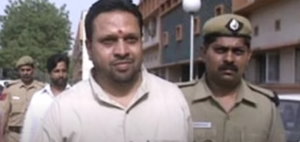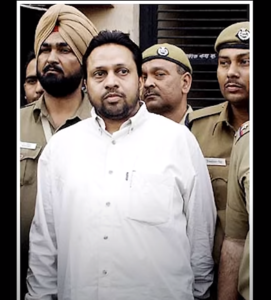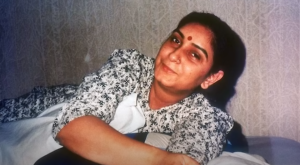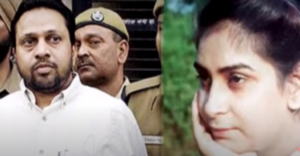Rarest of rare case
One of the most famous crimes in India was the murder of Naina Sahni by her husband, Sushil Sharma, who used to be a leader in the Youth Congress. This case is known as the “Tandoor Case“.

Sharma burned Sahni’s body in a tandoor, which is a traditional clay oven used for cooking. This is where the name “Tandoor Case” came from.
A young woman named Naina Sahni was killed by her husband, Sushil Sharma. This is what the Tandoor Case is all about. Even though Sahni and Sharma were married, their relationship was in bad shape. They fought a lot and Sharma was accused of cheating on her.
On the night of July 2, 1995, Sahni and Sharma got into a heated fight at their Delhi home. Reports say that Sharma shot Sahni with his licenced revolver as the fight got worse. Sharma chose to get rid of Sahni’s body after he realised she was dead.
Sharma came up with a plan to get rid of Sahni’s body instead of telling the police about the crime. He took her body apart and tried to burn it in the tandoor (clay oven) of the Delhi restaurant Bagiya, where he was the manager. Because of this, the case became known as the “Tandoor Case.”
Sharma did try to get rid of the body, but it wasn’t completely successful. Neighbours called the cops because they could smell a strong smell coming from the restaurant’s tandoor. When the police looked into it, they found Sahni’s body in the oven.
During the hearing, Sharma at first denied having anything to do with killing Sahni. He was finally found guilty, though, thanks to forensic analysis, witness statements, and other evidence that didn’t directly prove his guilt. The judge said he was guilty of murder and made him die.
The case got a lot of attention from the media because it was shocking and the crime was very violent. It was an important case in India’s legal history because it set a standard for using the death sentence for the worst crimes.
Who is Sushil Sharma
 The person responsible for the Tandoor Case, Sushil Sharma, had a past of both being involved in politics and committing crimes. Some background on him is given below:
The person responsible for the Tandoor Case, Sushil Sharma, had a past of both being involved in politics and committing crimes. Some background on him is given below:
Sushil Sharma was a member of the Indian National Congress party and the Youth Congress. He was said to be a member of the Youth Congress and want to run for office.
Sharma had a past of crime before the Tandoor Case. He was accused of many illegal things, such as bribery and taking land without permission. But he was able to avoid major legal consequences for these actions.
Sharma had a lot of problems in his personal life, especially in his marriage to Naina Sahni. Reports say that their relationship was tense and that both of them were accusing the other of cheating.
Sharma was managing a Delhi restaurant called Bagiya at the time of the crime. In the tandoor of this restaurant, he tried to get rid of Naina Sahni’s body after killing her.
Sharma’s actions in the Tandoor Case show that he has a troubled mental state, marked by extreme violence and anger. Not only did he kill his wife, but he also tried to burn and cut up her body, which shows he has no respect for life.
Overall, Sushil Sharma’s background shows that he is a complicated person who has done bad things in the past and has had a hard time in his personal life. His deeds in the Tandoor Case shocked the whole country and made him one of India’s most infamous criminals.
Who is Naina Sahni

The victim in the Tandoor Case, Naina Sahni, had a pretty normal life before she died in an awful rage.
Naina Sahni was an Indian woman in her 20s who lived in Delhi. The person who did the Tandoor Case, Sushil Sharma, was married to her. It was said that they had a lot of fights and accusations of cheating in their marriage.
Sahni was called an educated woman, but not much is known about her exact educational past. While she was alive, she was said to have been working as a teacher or speaker.
Sahni’s family and friends were heartbroken when she died too soon. People who knew her and the people of Delhi were shocked when she was killed.
Reports say that Sahni was a victim of domestic abuse by her husband, Sushil Sharma. There aren’t many details about the abuse she went through, but it’s clear that their relationship was unstable and full of problems.
The sad ending of Sahni’s life was that she was killed by Sushil Sharma on the night of July 2, 1995. The way her body was handled in a restaurant’s tandoor after she died shocked the whole country and led to one of India’s most famous crime cases.
There isn’t a lot of information about Naina Sahni’s past, but her story is a powerful reminder of how terrible domestic violence can be and how important it is for society to learn about it and do something to stop it.
Police investigation
The police investigation into the Tandoor Case was very detailed and all-encompassing. They wanted to find proof of the events that led to Naina Sahni’s murder and to find and arrest Sushil Sharma, the killer.
Here are some important facts about the police investigation:
The investigation began when the cops were told that a tandoor oven at a Delhi restaurant called Bagiya was giving off a strong smell. When the cops got to the scene, they found Naina Sahni’s body parts inside the tandoor.
Experts in forensics were called to look over the crime scene and gather proof. A close look was given to the tandoor and the area around it to find any physical clues that might help them identify the person who did the crime.
On the night of the murder, the cops talked to witnesses who were at or near the restaurant. These statements from witnesses helped put together a timeline of events that led to the finding of Sahni’s body and gave important information about Sharma’s actions and behaviour.
Sushil Sharma was named as the main suspect in the case, and he was then taken by the police. Initially, Sharma denied having any part in Sahni’s death while being questioned. But after being questioned over and over again and more and more proof being presented, he finally admitted to the crime.
The police put together the events that led to Sahni’s death using the proof they had gathered and Sharma’s confession. This reconstruction helped the prosecution make a strong case against Sharma in court.
The police gathered more proof than just confessions and physical evidence. For example, they got Sharma’s revolver, which was used in the murder, and anything else that could connect him to the crime.
To help with the case, the police may have worked together with other police departments or forensic experts. When different agencies work together, they can use their unique skills and tools to solve cases like the Tandoor Case.
Additionally, the police investigation into the Tandoor Case was thorough and careful, which led to the collection of strong evidence that eventually proved Sushil Sharma guilty of killing Naina Sahni.
The court case:
The hearing of Sushil Sharma, the criminal in the Tandoor Case, in court was a major legal event that got a lot of attention because of how shocking the crime was.
Sushil Sharma was charged with killing his wife Naina Sahni and then burning her body in a tandoor oven to get rid of the body. The court where the hearing took place was in Delhi, India.
The prosecution used a variety of evidence during the hearing to prove Sharma’s guilt beyond a reasonable doubt. This proof included forensic tests, statements from witnesses, and Sharma’s own admission of guilt.
Experts in forensics gave important evidence linking Sharma to the crime scene. For example, DNA testing was done on the body parts found in the tandoor, and the revolver used in the murder was put through a ballistics test.
People who were at or near the crime scene gave evidence that supported the prosecution’s case and helped show what happened before Sahni was killed.
During the hearing, Sushil Sharma admitted that he had killed his wife in a rage and then tried to get rid of her body by setting it on fire in the tandoor. The fact that Sharma admitted guilt was a big part of proving his crime.
Sharma had a lawyer present, and it’s possible that his defence team questioned the prosecution’s evidence and witnesses to make people doubt his guilt. Sharma’s defence may have had a hard time, though, because there was a lot of proof against him, including his own confession.
The court gave its verdict after looking at all the facts and arguments that were given during the trial. He was found guilty of murder and given the death penalty. Because the court thought it was the “rarest of rare” crimes, they gave the person the harshest sentence possible.
Ultimately, Sushil Sharma was found guilty of killing Naina Sahni after his hearing in the Tandoor Case. This shows that the legal system works to hold people responsible for terrible crimes accountable for their actions.
 Why the case was called one of the “rarest of rare” :
Why the case was called one of the “rarest of rare” :
The murder was especially brutal and horrible because the body of the victim was burned in a tandoor. Cases of this kind of extreme violence are often called “the rarest of the rare.”
The case got a lot of attention from the people and the media because it was so shocking. It shook the whole country and changed society for a long time.
Sushil Sharma did not feel bad about what he did, which made the crime even worse. Betrayal of Trust: Sharma was married to Sahni, and the murder illustrated how trust can be broken in close relationships, making the crime even worse.
The case set precedents for how the death sentence is used in India’s courts. Because of this, people started to use it as a standard to decide when the death sentence should be used, especially when the crime was so horrible that it shocked everyone. Because of these things, the Tandoor Case was seen as the very rarest of the rare cases and called for the harshest sentence possible under the law.
The Moral
Finally, the Tandoor Case is an eye-opening illustration of the important moral lessons we need to learn as people and as a society.
It makes us remember how important it is to stop and deal with domestic abuse, protect the worth and dignity of every life, and build relationships based on trust, respect, and talking to each other.
As we think about the terrible events that followed Naina Sahni’s death, we are moved to renew our dedication to justice, understanding, and kindness.
Our goal should be to make a world where no one is afraid of violence, where everyone is treated with respect and honour, and where fairness and equality guide how we act and what we do.
Everyone should take action to stop gender-based violence, help survivors, and hold abusers responsible for their actions.
The Tandoor Case is a wake-up call for all of us. It shows how important our legal and justice processes are for getting justice to everyone quickly and fairly, and how we are all responsible for making our society more fair, just, and humane.
Let us not only mourn the lives lost in this terrible part of our country’s past, but also promise to work towards a future where such horrible crimes are not only punished, but also stopped.
Bibhu Mishra is a prolific writer who has published many books spanning various genres. He is a legal enthusiast and an avid researcher of cutting-edge technology, diving into fascinating realms to bring captivating narratives to life.

 Why the case was called one of the “rarest of rare” :
Why the case was called one of the “rarest of rare” :
